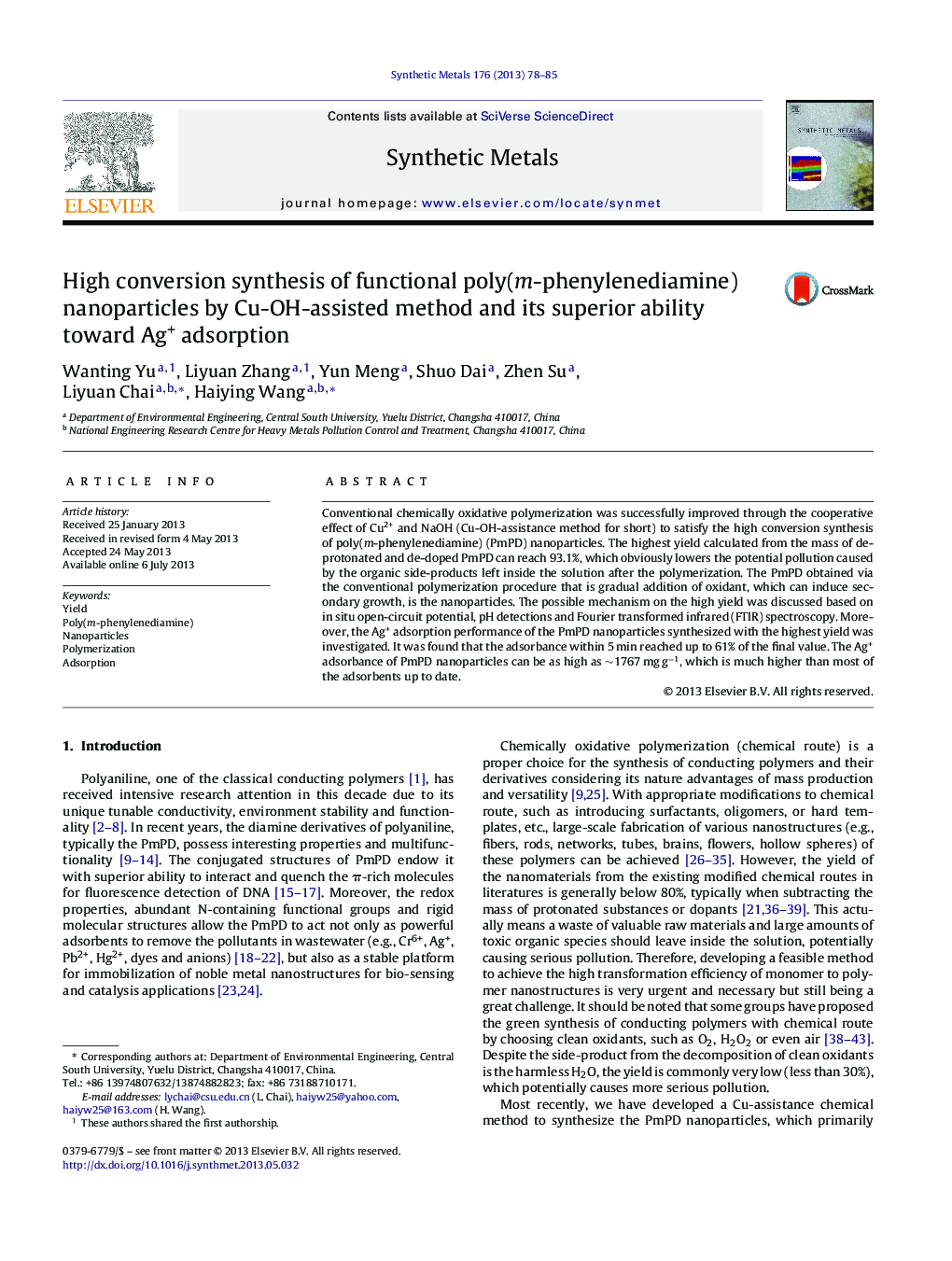| Article ID | Journal | Published Year | Pages | File Type |
|---|---|---|---|---|
| 1441267 | Synthetic Metals | 2013 | 8 Pages |
•Cu-OH-assistance satisfies clean synthesis of PmPD nanoparticle with yield 93.1%.•Polymerization mechanism was investigated.•PmPD nanoparticle possesses Ag+ adsorbance of ∼1767 mg g−1.
Conventional chemically oxidative polymerization was successfully improved through the cooperative effect of Cu2+ and NaOH (Cu-OH-assistance method for short) to satisfy the high conversion synthesis of poly(m-phenylenediamine) (PmPD) nanoparticles. The highest yield calculated from the mass of de-protonated and de-doped PmPD can reach 93.1%, which obviously lowers the potential pollution caused by the organic side-products left inside the solution after the polymerization. The PmPD obtained via the conventional polymerization procedure that is gradual addition of oxidant, which can induce secondary growth, is the nanoparticles. The possible mechanism on the high yield was discussed based on in situ open-circuit potential, pH detections and Fourier transformed infrared (FTIR) spectroscopy. Moreover, the Ag+ adsorption performance of the PmPD nanoparticles synthesized with the highest yield was investigated. It was found that the adsorbance within 5 min reached up to 61% of the final value. The Ag+ adsorbance of PmPD nanoparticles can be as high as ∼1767 mg g−1, which is much higher than most of the adsorbents up to date.
Graphical abstractPoly(m-phenylenediamine) nanoparticles with the highest yield of 93.1% can be achieved with conventional chemically oxidative polymerization improved by Cu-OH-assistance method, which further displays superior performance for Ag+ adsorption.Figure optionsDownload full-size imageDownload as PowerPoint slide
